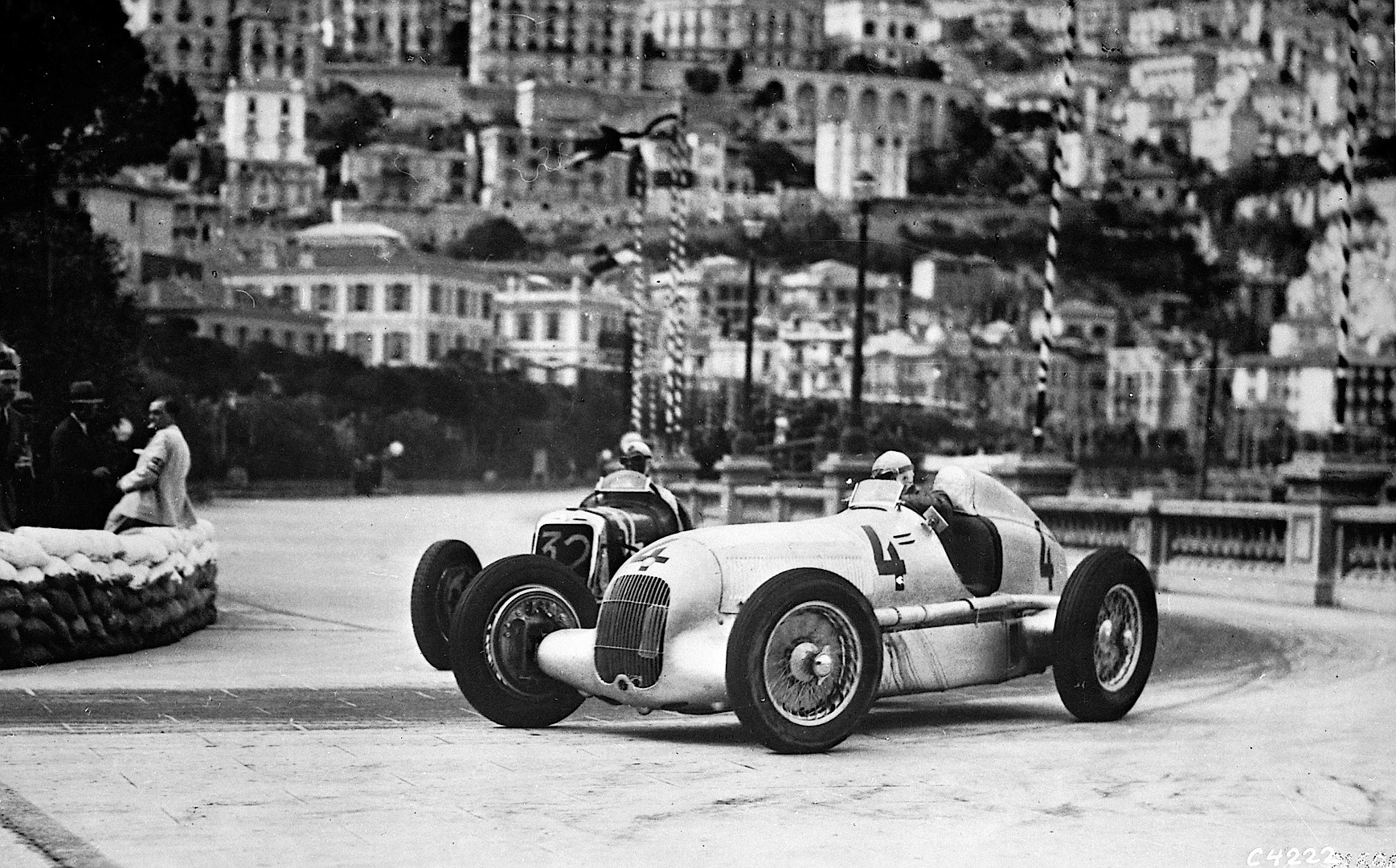The Circuits Dominated by The Silver Arrows
Avus
- Length: 19.29 km (11.98 miles)
- Fastest Lap: Rosemeyer (1937) – 276.32 km/h (171.74 mph)
The name of the trace is actually the initials of the proper name; Automobil Verkehrs und Ubungs Strasse which translates roughly to Automobile Traffic and Practice Street. Plans for the circuit were devised in 1907 as part of a national highway system but was not completed until 1921. The track was composed of two two-lane roads each 9.78 km (6.08 miles) separated by an 8 meter (26 ft) grass median strip. At the south end was a chicane while at the north end was a wide-radius loop later rebuilt with a 43 degree banking. In comparison the banking at Daytona International Speedway never exceeds 31 degrees! With a vertical concrete retaining wall at the top of the banking this was definitely a corner that would separate the men from the boys. Herman Lang’s winning 1937 race average was not bested at Indianapolis until 1967 by A.J. Foyt!
Belgrade
- Length: 2.79 km (1.73 miles)
- Fastest Lap: Nuvolari / von Brauchitsch – (1939) – 1 min. 14.0 sec. 135.1 km/h (83.9 mph)
The circuit is roughly triangular in shape and located inside a large park. The Grand Prix of Yugoslavia was the last Grand Prix run until after World War II. Held on the very day that England declared war on Germany the race was a sad affair with only five contestants including a very reluctant von Brauchitsch who had to be literally dragged off a plane bound for exile in Switzerland! The race was won by Nuvolari but sadly the great Silver Arrows had to return to Germany and race no more.
No Subscription? You’re missing out
Get immediate ad-free access to all our premium content.
Get Started



